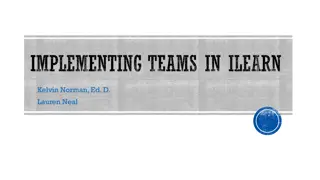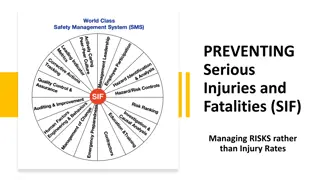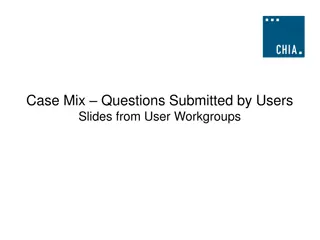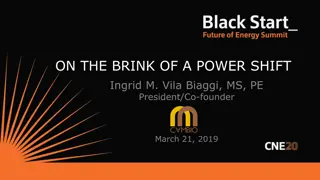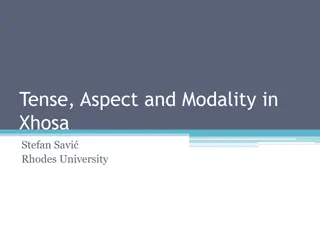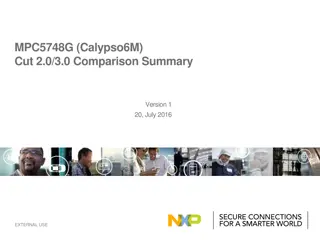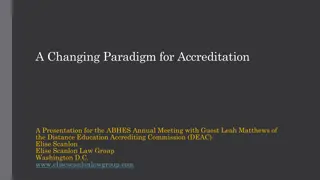Overview of Paradigm Future Versions
The three different versions of Paradigm's future scenarios presented by Matthew Bailes. Understand the key starting points, operating areas, modelling assumptions, and results of each version. Delve into the potential impact on homes owned, gearing levels, interest covers, and more, providing valuable insights for strategic planning and decision-making.
Download Presentation

Please find below an Image/Link to download the presentation.
The content on the website is provided AS IS for your information and personal use only. It may not be sold, licensed, or shared on other websites without obtaining consent from the author.If you encounter any issues during the download, it is possible that the publisher has removed the file from their server.
You are allowed to download the files provided on this website for personal or commercial use, subject to the condition that they are used lawfully. All files are the property of their respective owners.
The content on the website is provided AS IS for your information and personal use only. It may not be sold, licensed, or shared on other websites without obtaining consent from the author.
E N D
Presentation Transcript
Three versions of Paradigm 12 July 2022 Presented by: Matthew Bailes, Group CEO
WHERE ARE WE STARTING FROM? CLICK TO EDIT MASTER TITLE STYLE Heartland one of the least deprived areas of the country; high market values Now just over 16,000 homes Largely vanilla business model rent and shared ownership Average SAP rating relatively good (73 v sector average c.68) Strong margins operating margin w/o sales c.40% Only 4 blocks over 18m none with cladding (now) Stable treasury position (WACC = 3.7%), all drawn debt fixed, 49% gearing G1 / V1; A+ (S&P) Constraints: short-term on-lending, impairment; long-term - gearing LSVT very first transfer over 30 years ago > Click to edit Master text styles > Second level > Third level > Fourth level >Fifth level
OPERATING AREA CLICK TO EDIT MASTER TITLE STYLE > Click to edit Master text styles > Second level > Third level > Fourth level >Fifth level
MODELLING ASSUMPTIONS CLICK TO EDIT MASTER TITLE STYLE Cautious on rents, interest rates, component life cycles, HPI etc. EPC C by 2030; net zero by 2050 > Click to edit Master text styles > Second level No assumed disposals > Third level Covenant compliance maintained with gearing controlled within risk appetite > Fourth level >Fifth level Variables: net costs zero carbon, rents v inflation next year Development increased 50:50 tenure split up to maximum gearing level
THREE VERSIONS OF THE FUTURE CLICK TO EDIT MASTER TITLE STYLE Paradigm A net cost zero carbon = 0 > Click to edit Master text styles Paradigm B net cost zero carbon = 10k/unit > Second level > Third level Paradigm C rent freeze in 2023, net cost zero carbon = 22k/unit > Fourth level >Fifth level
RESULTS CLICK TO EDIT MASTER TITLE STYLE Paradigm A Paradigm B Paradigm C Maximum gearing 64% (2051) 64% (2051) 64% (2051) > Click to edit Master text styles > Second level Minimum interest cover 135% (2051) 137% (2051) 141% (2051) > Third level Homes / annum 600 520 300 > Fourth level 34,000 Homes owned / managed 2051 31,500 26,000 >Fifth level Loss homes v Paradigm A N/A 2,500 8,000
OBSERVATIONS CLICK TO EDIT MASTER TITLE STYLE Smooth spend profile of NZC important given annual interest cover tests risk of collective optimism bias on the speed of progress given complexities? New homes v Investment works = Apples v Pears Role of disposals? Lack confidence on grant funding affects development appetite now Importance of future rent policy (!) Very basic level question of who pays? Taxpayer through grant Residents / Taxpayer through rents People who would have got the homes we would have built with more funding > Click to edit Master text styles > Second level > Third level > Fourth level >Fifth level
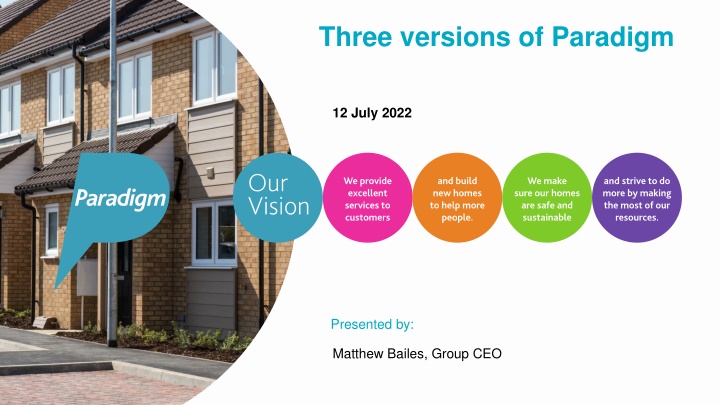


![[PDF⚡READ❤ONLINE] Black Hole Astrophysics: The Engine Paradigm (Springer Praxis](/thumb/21503/pdf-read-online-black-hole-astrophysics-the-engine-paradigm-springer-praxis.jpg)





